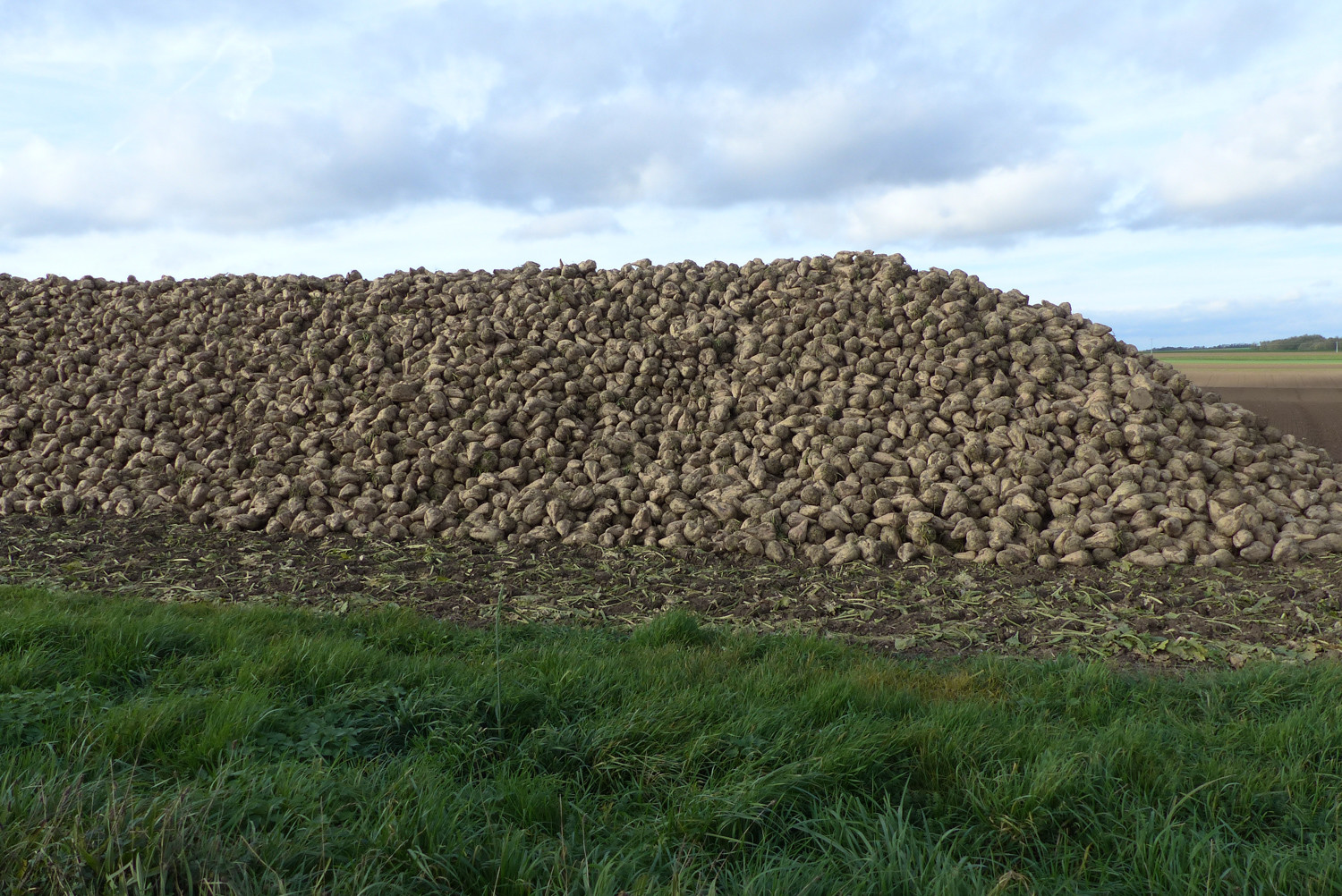When is a rock not really a rock, and a beet not quite a beet?
Last fall, we were driving through a rural area in southern Germany. Instead of a short ride to our destination, we ran into a road closure.
Without our GPS, we would still probably be there.
It turned into a lovely side trip, however, as we took narrow roads through lush farming country. Along the way, we began noticing huge mounds of uniformly shaped, whitish clumps stacked up along the road. Initially, I thought they were stones cleared from the fields and dumped conveniently out of the way.
However, the clumps appeared too regular and the terrain did not otherwise appear rocky.
Eventually, we realized they were piles of a tuber that had been harvested, although what tuber remained a mystery. They were neither white potatoes nor sweet potatoes, and there was no one to ask.
In the end, a little detective work provided the answer. They were sugar beets, which I had never seen before. Unlike their cousins, the table beet, they are quite substantial and they are definitely not red.
Remember when geography was taught in schools and we made product maps? Frequently, sugar beets were listed on the maps, but they had no other reality for us students, especially if you lived on the east coast. We are much more familiar with sugar cane as the source of our daily sweetener, and know that, at one time, Cuba was a major sugar producer.
The subject of sugar and sugar cane came up again when we studied the slave-trade triangle. Sugar cane requires intense and onerous physical labor in a tropical climate, and plantations could not find sources of labor willing to work under those difficult conditions.
Sugar produced in the West Indies, generally shipped to New England or Europe as molasses, was converted into rum. The profits from rum were then used to buy manufactured goods, which were shipped to Africa, and the profits from those sales were used to buy slaves, which were then transported back to the New World as labor.
Even after the abolition of slavery, owners of the cane fields managed to secure other forms of forced labor.
However, if you thought that sugar cane has its origins in the Americas, you would be mistaken. Saccharum officinarum is a grass from the family Poaceae, and it was being grown in New Guinea (a large island in the Pacific Ocean, off the north coast of Australia) by 8,000 B.C. Other important members of the Poaceae family include oats, wheat, rice and maize (corn).
The Indians of Asia discovered how to crystallize sugar around A.D. 350, so seemingly until that time, cane was simply chewed for its sweetness.
By the sixth century, cultivation and refinement of sugar had moved west from India to Persia (Iran), and by the seventh century, it had spread east to China.
The Arabs brought sugar to Europe, where it was a luxury item with prices competitive with exotic spices.
The English word “sugar” derives from the Sanskrit sarkara through the Arabic sukkar. The name Saccharum is also clearly derived from that Sanskrit word as well. Officinarum — “of dispensaries,” referring to an apothecary or herbalist — is in recognition that the original use for sugar in ancient Rome was strictly medicinal.
Sugar cane is a clump-growing perennial, consisting of numerous, unbranched stems. A single clump can be re-harvested over several seasons. Depending on the growing method, the plant may be replaced after two-to-three years, or might be allowed to remain for re-harvesting for up to 10 years.
It can grow in a variety of soils, although it requires a tropical climate and plenty of water.
There are even varieties that can fix nitrogen, like legumes do with the help of a bacterium, Gluconacetobacter diazotrophicus. Grasses have a series of jointed growing points called nodes. Growing in the internodal sections of the cane is a white pith bathed in a sugary sap.
Creating our familiar granulated sugar is a multistep process involving crushing the cane, concentrating the sap, and finally crystallizing it. A large quantity of waste is produced in the form of crushed stalks called bagasse.
Fortunately, it has many uses. It is frequently burned directly as fuel, which also can power the sugar mills. Or it can be converted to biogas. It is used as animal feed after mixing with molasses, enzymes and fermenting the mass. The pulp is used to make paper and cardboard. It is also used to make a product resembling plywood.
Once again, despite the fact that this article started off about sugar beets, I have committed a serious digression. We will return to those beets next week.
Have a thought or comment for Sura Jeselsohn? Email her at greenscenesura@gmail.com.






